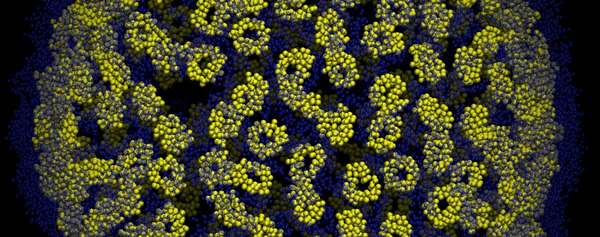Psst! Don't panic, but you've got sleeper agents inside of you: viruses
that have integrated their genome into human DNA. No big deal, you say,
so what if we've got a few hitchhiking genes in our genome? Actually,
there's quite a bit of them:
Scientists have identified 100,000 pieces of retrovirus DNA in our
genes, making up eight percent of the human genome. That’s a huge
portion of our DNA when you consider that protein coding genes make
up just over one percent of the genome.
Carl Zimmer of
The
Loom blog over at National Geographic explains how one such viral
gene could be awaken (by infection by HIV, for example) after lying dormant
for six million years in our DNA:
Markovitz and his colleagues analyzed the sequence of the virus genes
they found in the patients with HIV. The genes belonged to a family
of endogenous retroviruses called HERV-K, but they were not quite like
any known HERV-K virus previously found.
The Michigan scientists wondered if this new HERV-K virus was hidden
in the human genome. They checked the most complete draft of the human
genome and couldn’t find a match. They knew that the human genome
sequence was only about 95% finished, so they turned instead to the
chimpanzee genome, on the off chance that the virus had infected the
common ancestor of humans and chimpanzees over six million years ago.
Bingo: a single copy of the virus turned up in the chimp genome. They
dubbed it K111.
Having found this match, the scientists decided to return to the human
genome and search for K111. They isolated DNA from their HIV patients,
as well as from healthy people. They then split apart the two strands
of the DNA and added a short piece of DNA that would bind to K111, should
it be lurking there. In all 189 of their subjects, the scientists found
the virus’s DNA.
Read the rest over at
The Loom.


No comments:
Post a Comment